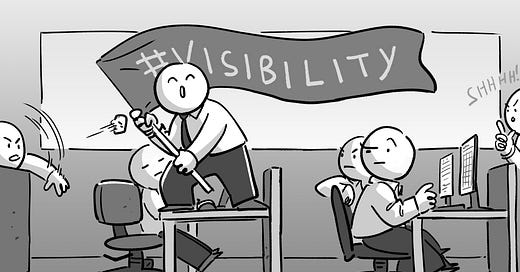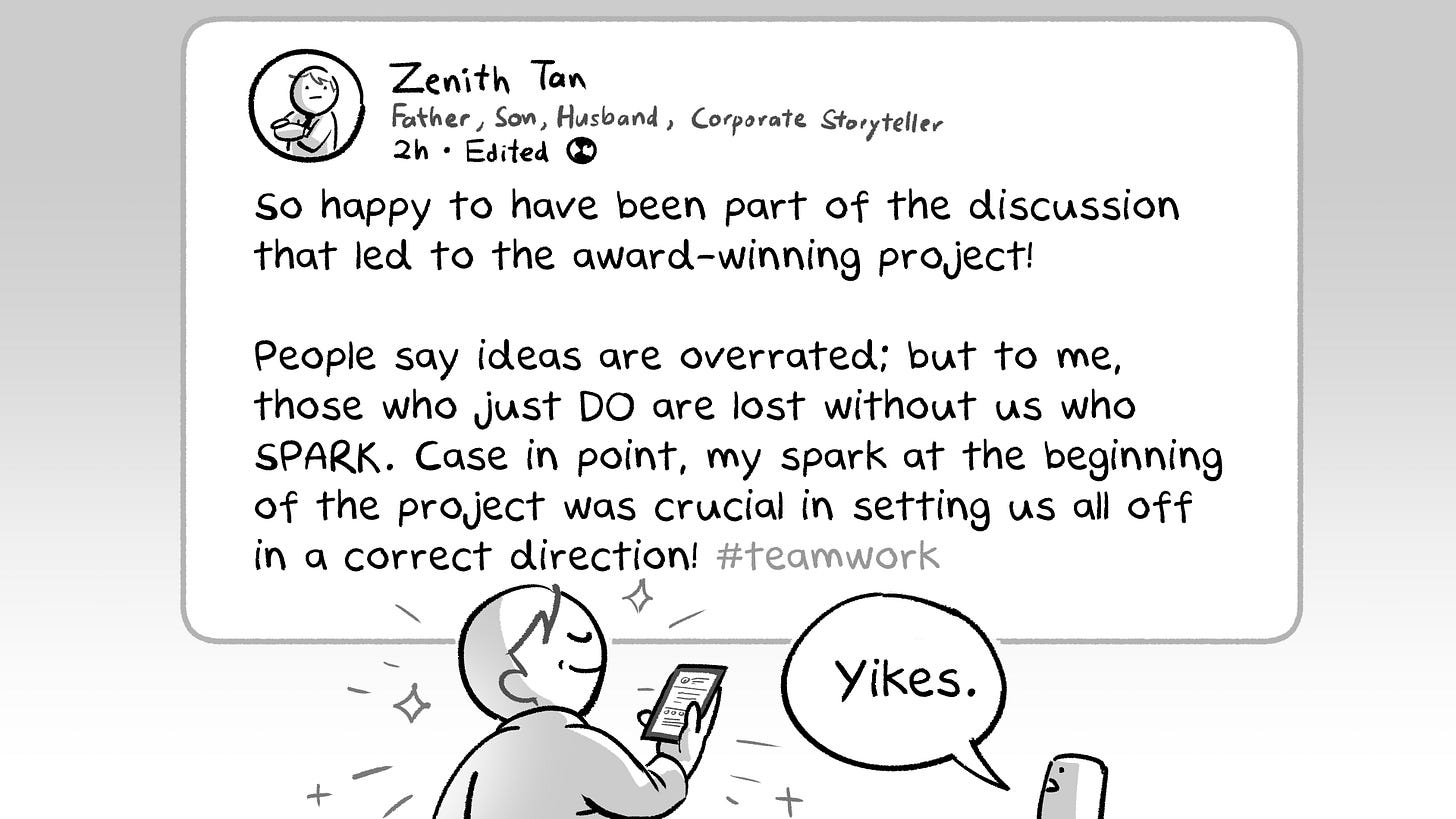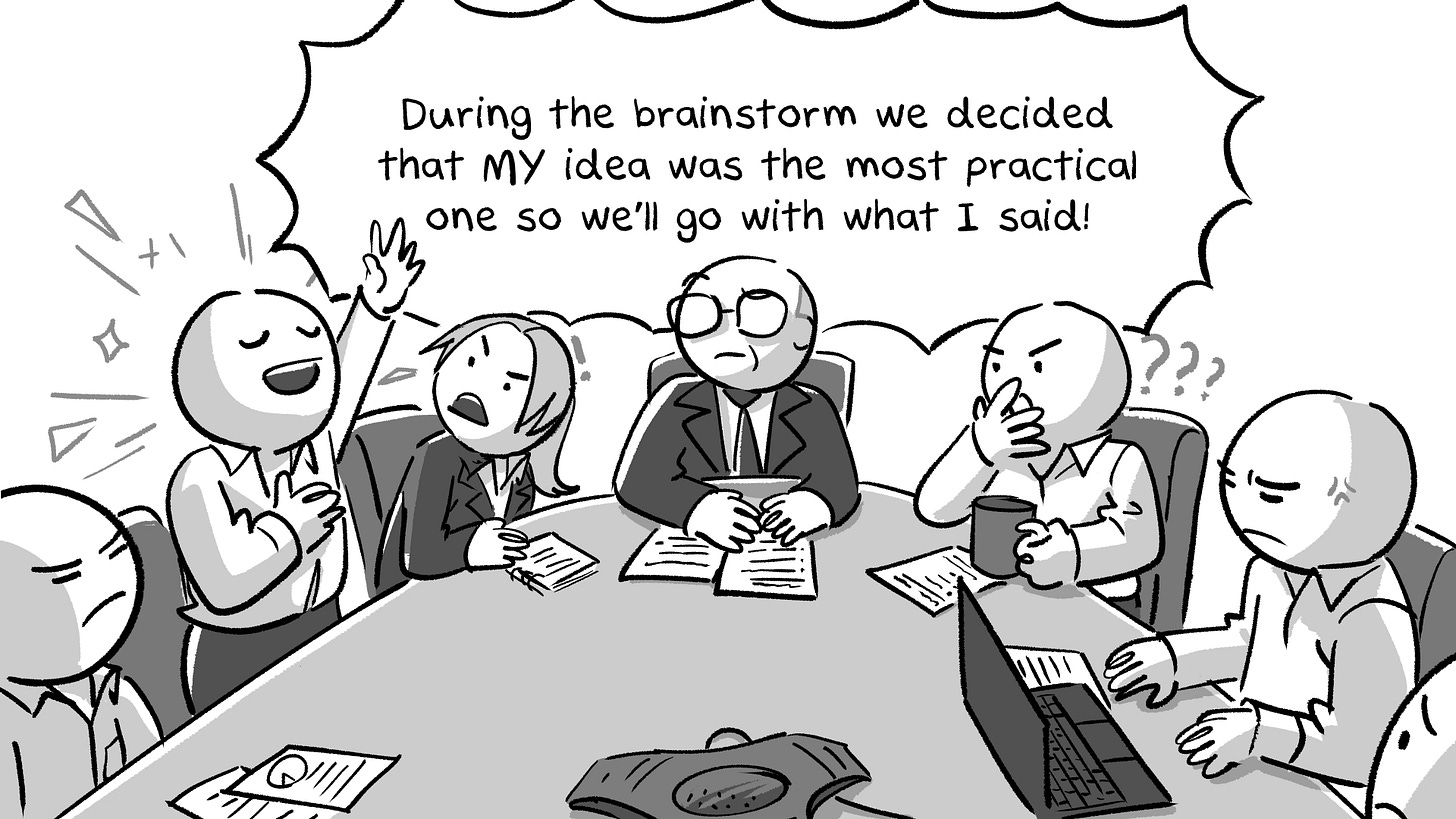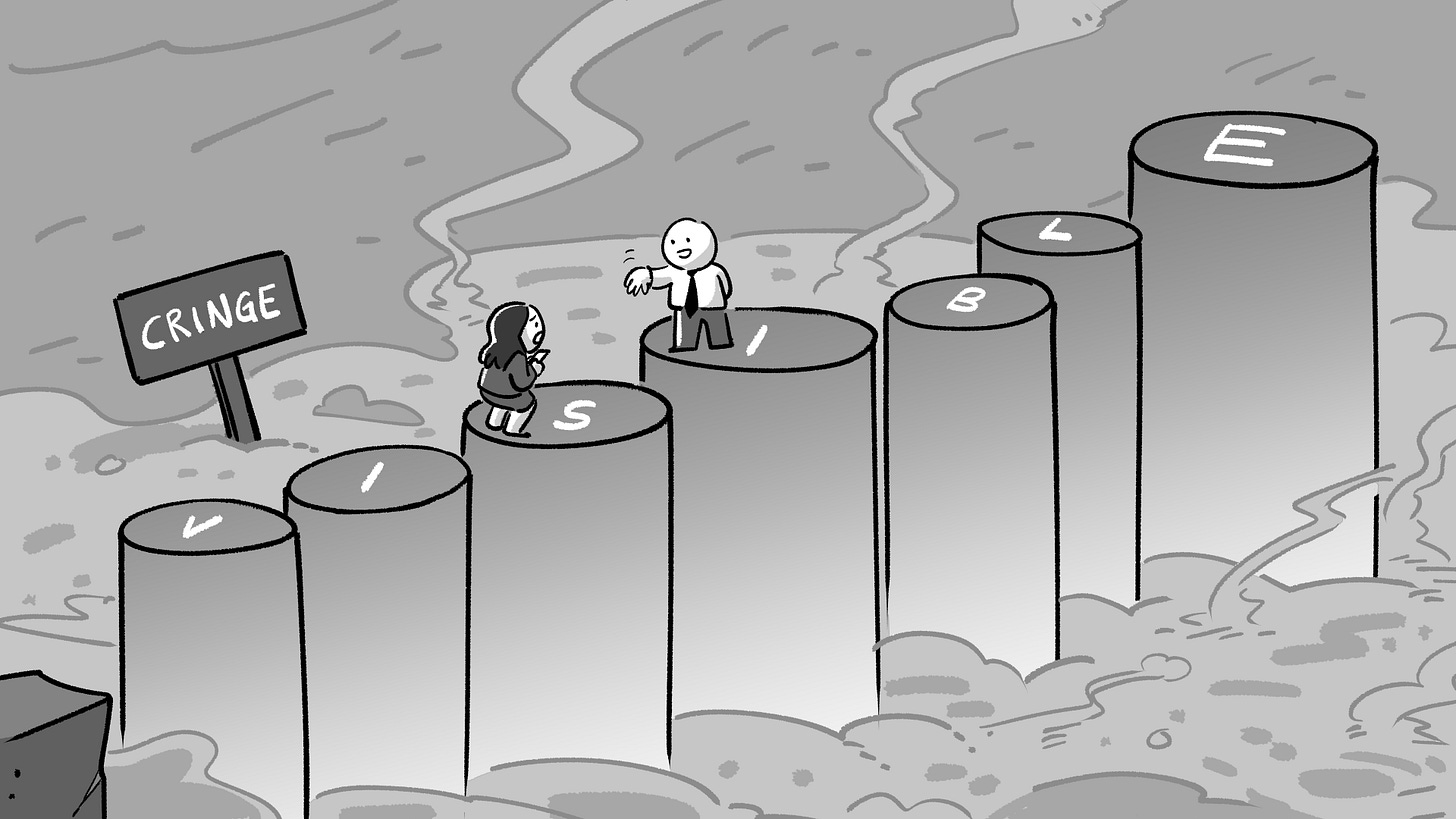How to be visible at work without being cringe
Y'all asked us this previously. Here's our take.
DISCLAIMER: THIS POST IS BROUGHT TO YOU BY NTUC. DO NOT PROCEED IF YOU DON’T LIKE SPONSORED CONTENT.
If there’s one element of the workplace that confounds Singaporeans, it's the idea of visibility.
In a culture where work is supposed to speak for itself, where most people pride themselves as ‘do-ers’, many people perceive standing out as ‘wayang’ — being performative, while not actually performing.
But in a globalised workplace, silence is costly. Quieter folks, even if more competent, lose out to more outspoken counterparts who’re more used to direct communication.
On the other extreme there are also those who think they’ve mastered visibility but stand out in all the wrong ways. Like posting inane LinkedIn posts, written by ChatGPT. Humblebragging. Namedropping. Taking credit for others’ work. Asking questions just to seem engaging. Making it too much about them.
All while being blissfully unaware that everyone’s giving them the side-eye.
Still, it’s important to work on the skill of visibility (yes, it’s a skill). So here’s our two cents on how you can work on being more visible at work, without being cringe and annoying everyone in your office.
(Btw, these tips apply even if you work remotely.)
Further reading: You worked hard. So what?
1. Focus on being competent first.
First things first: being seen is only half the equation. You actually have to be competent at your job.
The stereotype of the groupmate or colleague who just wayangs likely came from the real experiences many of us have had, where they were all talk but no action.
People might be impressed the first time you speak up, but you need the skills to back it up. Make sure to follow through with real results or output, like performing your role well, or bringing results to the table.
And when you do want to share about your accomplishments, try focusing on the outcomes instead. You can share a before-and-after snapshot of a process you improved, or offer insights from a project you ran. Let the results speak for themselves, but help others notice them by adding context.
Remember, the more visible you are, the easier your lack of competence can get exposed. And that will be a very hard impression to wipe away once you have that reputation.
2. Uplift others as a way to uplift yourself.
Don’t take all the credit, especially for group work. Make sure to highlight even the smallest contributions of your teammates.
This will show two things about you: that you’re humble, and that you’re a good team player who acknowledges the work of your other teammates.
When you recognise your team publicly, people associate you with leadership, fairness, and generosity. It’s also a subtle flex because only people who feel secure in their own contribution have the confidence to share the spotlight.
When it comes to other people’s work, you may want to show that you’re interested by asking questions or giving feedback.
But to not come across as just making it about yourself, make sure that you’re also providing value.
Ask thoughtful questions. Offer solutions, not just observations. Provide another perspective. If you’re contributing to the group’s clarity or progress, people will take notice — and respect you for it.
Here are some things to consider before you speak up:
Is this the right time, place, and context to ask it? Will your question derail the presenter? Will it embarrass them in front of their boss? Are you solving a problem, or just showing off how sharp you are?
Sometimes, your visibility might come at the cost of someone else’s credibility. If you’re constantly the person who corners others to prove a point, you won’t be seen as insightful. You’ll be seen as petty.
And you will make enemies.
Which leads us to our next point…
3. Be mindful of context — not all situations are opportunities to be visible.
Before you embark on any visibility campaign of your own, you will need a healthy dose of self-awareness.
Things like knowing who you’re speaking to, as well as the time and place.
Not everyone cares about every little thing you do. You will need to tailor your updates to consider the person or team you’re addressing, and the situation in which you’re telling it.
For example, your department head may only want to hear high-level outcomes. Your manager, on the other hand, may want to know the nitty-gritty.
Without self-awareness, you risk being the person who clogs up time at company-wide townhalls talking about yourself.
Know the difference. Respect people’s attention and time.
And if you’re not sure whether you’re being helpful or annoying, ask. Observe how people respond. Behaviour that’s accepted in one workplace may not fly well in another.
Sometimes you can’t avoid cringe.
The thing is, you can’t control everyone’s reaction. Even if you are trying your best to uplift others, give thoughtful and compassionate feedback, and focus on your own work, some people would still see your efforts to be visible as cringe.
That’s fine. Given our culture of work, it’s expected — and explains why many of us struggle with it too.
Our take? Work on being genuine and kind. People can smell inauthenticity like a bloodhound, and that will affect your reputation.
Remember, your social capital is fragile. Handle it with care.
Stay woke, salaryman.
This message is brought to you by NTUC.
Being visible at work is a skill, just as doing your job is.
But sometimes, the lines between ‘visible’ and ‘cringe’ aren’t as clear, and having someone with more industry experience like a career mentor can help.
The NTUC Executive Mentorship Programme, offers mentees an opportunity to gain insights from the perspective of experienced industry mentors, from whom they can learn how to navigate office dynamics based on real-world experience.
Through one-on-one mentorship with experienced professionals, you can also get valuable guidance and support that can help in advancing your career – whether laterally or upwardly.
Find out more here: https://bit.ly/EMPNTUC
If you’ve read this far, please consider subscribing to our email newsletter (yes, this Substack). We cannot offer you much but we can offer this:
We have newsletter-exclusive articles that won’t be posted anywhere else. We created these articles for people who want to go deeper into complex issues than the shorter-form content we typically have.
If you don’t have social media or don’t follow our Telegram channel, you can still get updates to all our content emailed directly to your inbox to read at your own time.
We promise not to spam your inbox (but Substack might, so update your notification settings).










